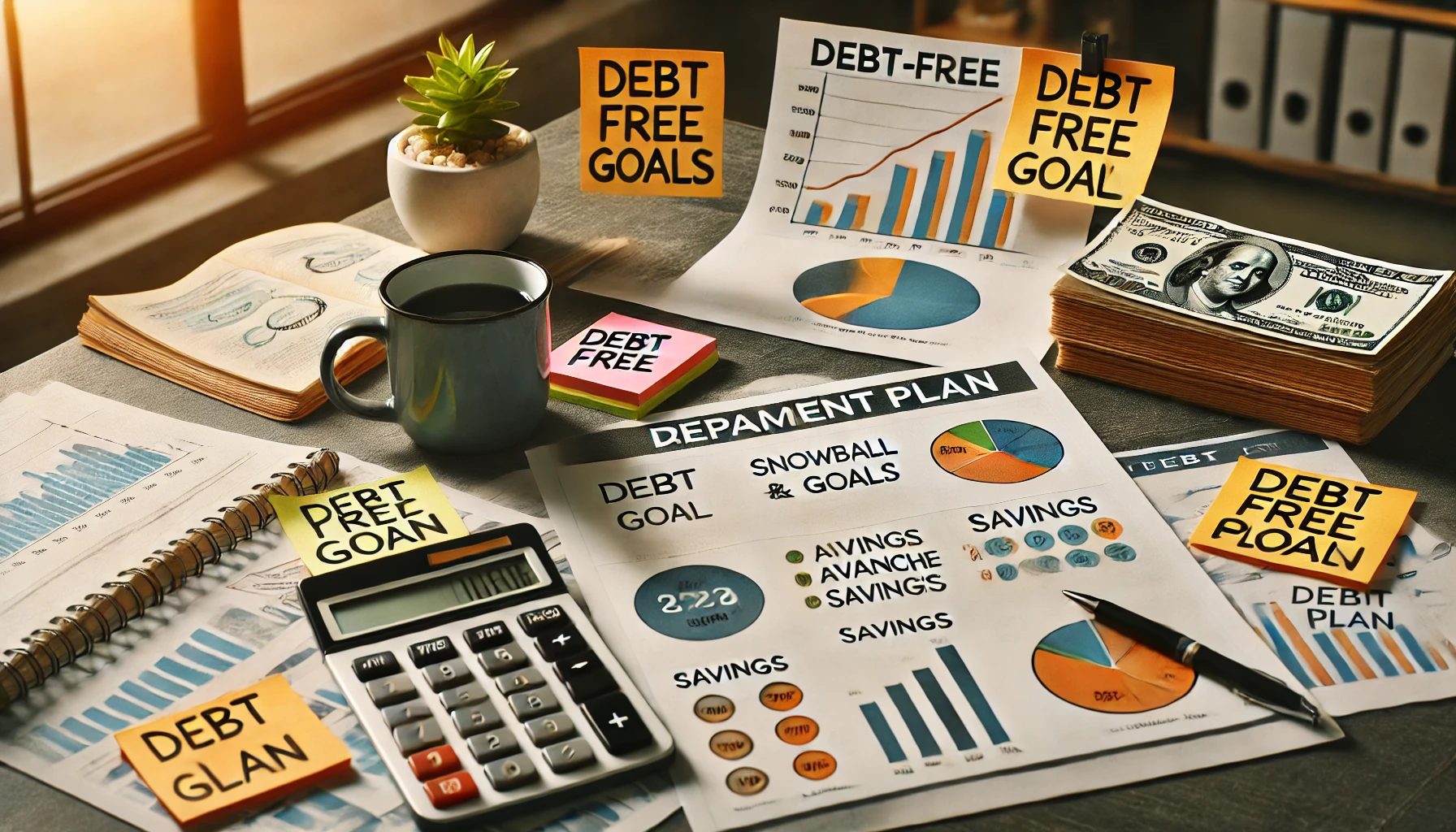Financial sustainability and achieving personal aspirations are directly linked to one’s capacity to budget, save, and manage money effectively. Engaging in meticulous budgeting strategies and saving practices as a young adult, even with a limited income, is paramount for future financial freedom. Establishing and adhering to a financial planning enables young adults to prevail over monetary constraints and realize life ambitions such as homeownership, higher education, and self-reliance.

In 2024, 35 out of the 50 U.S. states required a personal finance course for high school graduation, highlighting the growing emphasis on financial literacy. Similarly, 28 states required an economics course, showcasing an increased dedication to financial education. These steps show an understanding that money management for young adults starts with foundational knowledge in economics and personal finance courses.
Consider the power of investment basics: if you start early, investing $150 per paycheck at age 25 with an average annualized return of 8%, you could accrue around $1.1 million in forty years. Compound interest significantly enhances these returns, emphasizing the importance of starting early. Financial planners often highlight that good budgeting strategies and early investments are key to weathering market fluctuations and achieving long-term financial security.
Create a Budget
Instituting a budget is crucial in taking command of one’s finances; it is a strategic blueprint for allocating income towards various expenses and savings. Many individuals may claim to budget, yet struggle with surpassing predetermined spending limits, therefore transforming their proposed budget into a mere wish list. Budgeting empowers individuals to make prudent financial decisions, secure emergency and retirement funds, and avoid falling into debt.
Why Budgeting is Important
Personal budgeting plays a vital role in ensuring financial stability. By adhering to effective budget methods, you can prioritize essential spending, plan for savings, and mitigate the risk of incurring unnecessary debt. Financial experts often stress the importance of setting aside 3-6 months’ worth of expenses as an emergency fund to weather unexpected situations. This level of preparedness is vital for maintaining financial stability and achieving long-term objectives.
Choosing a Budget Method
Various budget methods offer different strategies for managing finances. The 50/30/20 budget rule is particularly popular, suggesting an allocation of 50% of income towards essentials, 30% for wants, and 20% for savings and debt repayment. This method encourages disciplined spending and helps in distinguishing between needs and wants. Another approach is zero-based budgeting, where every dollar is assigned a specific purpose. Choosing a method that aligns with your financial goals is key to maintaining personal budgeting effectiveness.

Tracking Your Expenses
Expense tracking is a fundamental aspect of personal budgeting. By monitoring your spending habits, you can identify areas where you may be overspending and make necessary adjustments. Modern tools such as budgeting apps and software simplify this process, providing detailed insights into your financial behaviors. Consistent expense tracking ensures that you adhere to your budget and helps you pave the way towards long-term financial stability.
Build an Emergency Fund
Creating an emergency savings fund is vital for financial security. This fund acts as a financial cushion, helping you navigate through unexpected expenses without compromising your ability to meet daily financial commitments.
How Much to Save
Financial advisors typically recommend saving three to six months’ worth of living expenses. To start, setting smaller goals like aiming for one month’s worth of expenses can make the goal seem more achievable. Establish a habit by committing to save small, regular contributions on a consistent basis. Automating your savings by setting up automatic deposits to a separate emergency fund account can help maintain discipline and ensure steady growth over time.

It’s essential to avoid increasing monthly spending or opening new credit cards, which might jeopardize your savings goals. Instead, use your monthly budget to determine the amount needed in your emergency fund by calculating your monthly expenses and multiplying by six. Consider not over-saving in your emergency fund; allocate excess funds towards investments that offer better growth potential, such as retirement accounts or stocks and bonds.
Best Types of Emergency Accounts
Selecting the right account for your emergency savings is crucial. High-interest savings accounts are ideal, as they offer higher returns while keeping your funds accessible. One common mistake is using a checking account or credit card for emergency funds; it’s recommended to keep them separate in a dedicated savings account. Setting up automatic recurring transfers is one of the easiest ways to start saving consistently and see your funds build over time. Once your emergency savings reach a significant amount, aim for a competitive high-yield interest account for faster earnings.
Remember, only dip into your emergency fund for real emergencies like major repairs, unexpected health expenses, or loss of income. This precautionary measure will help you maintain financial security and meet unforeseen expenses without financial stress. For more detailed guidance on setting up an emergency fund, consider reviewing the essential guide to building an emergency or exploring this smart guide on emergency savings.
Understand Taxes
Tax literacy is an essential aspect of financial literacy. Many young adults find themselves unprepared to manage their taxes effectively due to insufficient personal finance education in schools. Understanding the impact of different tax brackets is crucial for overall financial planning.

Monitoring Your Taxes
Monitoring your taxes involves keeping track of all taxable income and understanding the specific deductions and credits that apply to you. Whether you are earning income from a full-time job or part-time gigs, such as app-based jobs like Uber or Lyft, it is critical to retain all relevant tax forms, such as W-2 and 1099. Moreover, April 15th is the annual deadline for filing taxes on income earned in the previous calendar year, making timely submission crucial.
Calculating After-Tax Income
Calculating after-tax income requires a solid grasp of tax literacy. For instance, a $35,000 annual salary in New York results in approximately $27,455 after taxes, illustrating the tax bracket impact. Utilizing online calculators can help individuals see the effect of various tax scenarios on their net income, allowing for informed career and salary negotiations. Understanding your after-tax income is fundamental for budgeting, financial planning, and achieving long-term financial goals.
Invest Early
Embarking on investment endeavors at an early stage is instrumental for taking full advantage of compounding interest over the years. Younger investors benefit from extended periods of growth, allowing them to potentially accumulate more substantial returns. Investing $200 monthly with an average return of 9% could yield over $850,000 after 40 years, showcasing the immense power of starting early. Understanding the various investment account types is crucial for maximizing these benefits.
Types of Investment Accounts
Exploring different investment account types can be beneficial. For instance, retirement accounts like 401(k)s and IRAs offer structured frameworks for long-term savings. Employer-sponsored plans, typically matched by the employer, can significantly boost your savings. Traditional and Roth IRAs provide further flexibility, with Roth IRAs famously having no required minimum distributions, making it easier to manage retirement savings.
Importance of Compounding Interest
The compounding interest benefits are a vital aspect of early investment strategies. With an investment horizon of 40 to 50 years, recent college grads can observe their investments growing exponentially. For example, a dollar invested at age 20 at a 4% annual return would grow to $5.84 by age 65, compared to $3.95 if invested at age 30. This emphasizes the importance of leveraging compounding interest to achieve long-term financial growth.
Save for Retirement
Achieving financial independence requires meticulous planning, especially when it comes to saving for retirement. Establishing early habits in contributing to retirement savings plans yields significant benefits over the long term.

Utilizing Employer-Sponsored Plans
Many employers offer 401(k) accounts as part of their benefits package, allowing employees to save pre-tax dollars and take advantage of employer matching. Saving at least 10% of your income is recommended to ensure a robust retirement fund, with the maximum pre-tax annual contribution to a 401(k) set to rise to $22,500 in 2023. Employer matching significantly enhances the overall savings, making it an imperative strategy for building your nest egg.
Individual Retirement Accounts (IRAs)
Besides employer-sponsored plans, Individual Retirement Accounts (IRAs) offer additional avenues for retirement savings. Roth IRAs, which are funded with post-tax income, stand out due to their tax-free withdrawals in retirement. The contribution limit for Roth IRAs in 2023 is $6,500, with an additional $1,000 for those over 50. Starting early allows your savings to benefit from compound interest, exponentially growing your wealth over time.
Ultimately, by leveraging both 401(k) accounts and IRAs, individuals can strategically pave their way towards financial independence. Initiating these practices early not only ensures a financially secure retirement but also enables you to capitalize on the powerful effects of long-term, compound growth.
Financial Literacy and Education

A staggering number of young adults enter the world of financial independence without the requisite knowledge to manage money, apply for credit, and handle debt. According to NEFE’s High School Financial Planning Program® (HSFPP), a free financial literacy program aimed at teens, 21% of Generation Z individuals reported that their parents did not teach them how to build financial wealth. Meanwhile, 28% of millennials echoed the same sentiment. This gap in vital financial knowledge highlights the need for better educational resources.
Resources for Learning
Enhancing financial literacy can be achieved through various educational resources available both online and offline. Banks and credit unions often offer free materials on budgeting, savings, and investments tailored for young adults. Digital tools from providers such as Discover and Chase can provide detailed spending reports to help track expenses. Programs like HSFPP are instrumental in providing a solid foundation for financial understanding among teens.
Books and Podcasts Recommendations
Personal finance books and money management podcasts are excellent tools for young adults looking to expand their knowledge. Renowned books such as “Rich Dad Poor Dad” by Robert Kiyosaki and “The Total Money Makeover” by Dave Ramsey offer valuable insights into financial planning. For those on the go, money management podcasts like “The Dave Ramsey Show” and “The Financial Independence Podcast” can provide practical advice and tips.
In summary, taking advantage of available educational resources can empower young adults to build a stable financial future. With the right financial literacy tools, individuals can confidently navigate the complexities of personal finance and secure their financial well-being.
Manage Your Debt
Addressing and managing debt effectively is central to achieving financial stability. Debt management involves understanding various repayment techniques tailored to your unique situation. Key to these techniques is creating a systematic approach to tackle outstanding debts, which can significantly contribute to your journey toward financial freedom.

Debt Repayment Strategies
Two predominant strategies for debt repayment are the snowball and avalanche methods. The snowball method focuses on eliminating smaller debts first, progressively moving towards larger ones. This technique provides quick wins and psychological boosts, motivating you to continue repaying your debt. In contrast, the avalanche method prioritizes high-interest debts to mitigate overall interest payments, which can save you money in the long run.
Choosing Between Snowball and Avalanche Methods
Choosing between these repayment techniques depends on individual financial circumstances and personal preferences. The snowball method may be more suitable for those who thrive on psychological momentum and need initial encouragement. Conversely, the avalanche method suits those more focused on minimizing interest payments and adhering strictly to financial efficiency. Ultimately, whichever strategy helps you commit to a consistent plan will propel you closer to financial freedom.
Set Financial Goals
Articulating clear financial goals enables young adults to craft a roadmap for their monetary achievements. Establishing short-term and long-term objectives aligns budgeting and saving efforts with concrete targets, facilitating the path towards desired outcomes like purchasing a car or home, or funding education.
Short-Term vs. Long-Term Goals
Short-term financial goals typically include achieving financial objectives such as saving for an emergency fund, vacation, school expenses, or a home renovation. These can generally be achieved in less than five years. On the other hand, long-term financial goals, like buying a car with cash or saving for retirement, require a longer timeframe, often spanning over five years. Setting a deadline for each goal helps create a sense of urgency and commitment.

Employing the 50/30/20 rule can significantly impact financial goal-setting. By allocating 50% of income to needs, 30% to wants, and 20% to savings, young adults can better manage their resources. Learning how to separate needs from wants further enhances budgetary control, contributing to more effective planning.
How to Stay Motivated
Maintaining financial motivation is crucial for young adults to reach their financial objectives. Visually representing goals through vision boards or charts can serve as daily reminders of one’s financial journey. Writing down financial goals increases the likelihood of achieving them, as it promotes commitment and focus. Additionally, having a goal accountability partner, such as a friend or spouse, can provide the necessary support and encouragement to stay on track.
Protect Your Wealth
Safeguarding your wealth involves strategic decisions regarding insurance and health coverage. Proper asset protection requires evaluating various insurance choices tailored to individual needs and financial situations. Renter’s insurance, disability insurance, and health insurance play critical roles in mitigating financial losses due to unexpected events.
Insurance Options
Young adults should carefully consider different insurance options to ensure comprehensive coverage. Renter’s insurance can cover personal property in the event of theft or damage, while disability insurance provides income protection if you are unable to work due to illness or injury. Evaluating employer-based plans and exploring options available through the Health Insurance Marketplace of the ACA can provide suitable health insurance choices that align with your budget and needs.
Importance of Health Insurance
The health insurance significance cannot be overstated, as it ensures access to necessary medical services while protecting against high healthcare costs. Regular health maintenance through routine check-ups and a balanced lifestyle contributes to long-term savings by preventing costly medical emergencies. Young adults must recognize the value of having a robust health insurance policy as part of their overall asset protection strategy, ultimately leading to a more secure financial future.
Utilize Financial Advisors
Engaging with financial advisors can significantly enhance your financial planning journey, offering tailored advice and strategies. Young adults, in particular, can benefit from professional guidance to navigate pressing financial challenges, such as student loan debt. According to Federal Reserve Board data, 34% of individuals under the age of 30 carry student loan debt.
Finding a Reputable Advisor
Finding the right advisor is crucial for effective financial planning. Reputable advisors, especially those with a fee-only structure, are often preferred as they minimize conflicts of interest. Platforms like XY Planning Network specialize in providing financial advice to younger, and Wealthtender offer comprehensive directories to help you filter advisors by specialties such as student loan planning and budgeting. Additionally, organizations such as the National Association of Personal Financial Advisors (NAPFA) and Garrett Planning Network connect individuals with advisors who act in their best interest, ensuring fiduciary responsibility.
Understanding Advisor Fees
Understanding the various fee structures is essential in advisor selection. The most common model is a percentage of invested assets, typically around 1%, which might not be suitable for young adults with lower account balances. Other financial advisors might offer flat fees, hourly rates, or commissions. The Garrett Planning Network, for example, provides hourly rates, making financial advice more accessible for young adults. When selecting an advisor, ensure they adhere to fiduciary responsibility, meaning they are legally bound to act in your best interest. Resources like the Certified Financial Planners (CFP) directory can help identify qualified professionals.
Furthermore, the rise of financial advice on social media has revolutionized how young adults access financial information, with 79% of millennials and Gen Z receiving advice through these channels. To delve deeper into how to find the right fit for your needs, consider exploring guidelines on advisor selection.
Conclusion
Embracing these twelve financial tips provides young adults with a comprehensive framework for nurturing their economic growth and fostering financial independence. From conscious budgeting and timely investing to strategic goal setting and prudent debt management, each recommendation serves as a pillar in constructing a robust financial foundation. Committing to continuous learning and seeking professional guidance when necessary can further enhance one’s aptitude to navigate the multifaceted realm of personal finance.
In the realm of personal finance essentials, small proactive steps can yield substantial long-term benefits. Encouraging consistent savings habits such as setting aside 10% of your earnings and managing credit card balances effectively can provide financial stability. Utilizing employer-sponsored plans like 401(k) and understanding the importance of contribution matching can significantly boost your retirement savings. Likewise, the benefits of compound interest illustrate the impact of starting to save early on accumulated wealth, underscoring the critical advantage of early investment.
Wealth building tips include experimenting with tools like the SEC’s compound interest calculator for hands-on learning and researching different financial institutions for the best-suited services. In addition, employing strategies like the 50/30/20 budget principle, regularly reassessing financial plans after major life milestones, and exploring debt consolidation loans or debt management plans can further solidify your path to financial independence. By following these advised practices and maintaining a vigilant approach to financial planning, young adults can lay a strong groundwork for a prosperous financial future.
FAQ
Why is budgeting important for young adults?
Budgeting is crucial for managing your money effectively, ensuring financial stability, and achieving personal aspirations such as homeownership, higher education, and self-reliance.
What are some effective budgeting methods?
Popular budgeting methods include the envelope system, zero-based budgeting, and the 50/30/20 rule. Each method provides a strategic way to allocate income towards expenses and savings.
How can I track my expenses?
Tracking expenses can be accomplished through various means such as keeping receipts, using budgeting apps, or maintaining a financial diary. Consistent tracking helps in maintaining financial discipline.
How much should I save in an emergency fund?
Financial experts recommend saving three to six months’ worth of living expenses in an accessible, high-interest savings account to cover unexpected financial disruptions.
What types of accounts are best for emergency savings?
High-yield savings accounts, money market accounts, and certificates of deposit (CDs) are excellent choices for emergency funds due to their liquidity and interest-earning capabilities.
How can I better understand my taxes?
Understanding your taxes involves learning about gross vs. net pay, different tax brackets, and their impact on your income. This can help in effective financial planning and preparation for long-term objectives.
How can I calculate my after-tax income?
Utilize online calculators and resources to determine your after-tax income. This helps in understanding your net salary and assists in career and salary negotiations.
What are the benefits of investing early?
Investing early allows you to take advantage of compounding interest over the years, potentially yielding substantial returns. Starting early maximizes growth over time.
What types of investment accounts should I consider?
Consider investment accounts like 401(k)s, IRAs, and employer-matched plans to optimize returns and take advantage of tax incentives.
How do employer-sponsored retirement plans work?
Employer-sponsored plans like 401(k)s allow you to contribute pre-tax dollars towards your retirement savings. Participating in these plans, especially with employer matching, can significantly boost your retirement funds.
What are Individual Retirement Accounts (IRAs)?
IRAs, including traditional and Roth IRAs, are personal retirement savings accounts that offer tax advantages and the potential for compound growth. They are essential for long-term financial security.
How can I enhance my financial literacy?
Enhance financial literacy through books, online courses, podcasts, and financial planning tools. Many banks and credit unions offer free educational materials tailored for young adults.
What are some recommended financial books and podcasts?
Recommended resources include “Rich Dad Poor Dad,” “The Total Money Makeover,” and podcasts like “The Dave Ramsey Show” and “BiggerPockets Money Podcast” which provide in-depth financial insights.
What are effective debt repayment strategies?
Effective strategies include the snowball method, which focuses on paying off smaller debts first, and the avalanche method, which targets high-interest debts to minimize overall interest payments.
How do I choose between the snowball and avalanche methods?
The choice depends on your personal financial situation and preference. The snowball method offers psychological wins by clearing smaller debts, while the avalanche method saves money by reducing interest expenses.
How do I set financial goals?
Establish clear short-term and long-term financial goals, aligning your budgeting and saving efforts with specific targets. Employ tools like vision boards to stay motivated and focused on achieving these goals.
Why is it important to have financial goals?
Financial goals provide a roadmap for your monetary achievements, guiding your budgeting and saving efforts towards concrete outcomes such as purchasing a house or funding higher education.
What types of insurance should I consider?
Essential insurance types include renter’s insurance, disability insurance, and health insurance. These protect against financial setbacks arising from unexpected events and ensure long-term financial security.
Why is health insurance important?
Health insurance is crucial for covering medical expenses, preventing financial strain from healthcare costs, and maintaining overall financial well-being. Explore options through the ACA Marketplace or employer-based plans.
How can a financial advisor help me?
A financial advisor provides personalized guidance on managing investments, crafting tax strategies, and planning for financial goals. Choosing a reputable, fee-only advisor ensures unbiased advice aligned with your interests.
What should I look for in a financial advisor?
Look for a fiduciary advisor with a fee-only structure to avoid conflicts of interest. Ensure they have the expertise and credentials to provide sound financial advice tailored to your needs.

More Posts
Manage OCD And Procrastination- Effective Mental Health Tips
Many people with OCD put off everyday tasks due to tough feelings, anxiety, and sometimes obsessive thoughts that make even specific tasks feel overwhelming. For people with obsessive-compulsive disorder, both internal and external...
12 Ways to Stay Consistent on Monthly Goals
Consistency is key to reaching dreams and getting what you want. It turns trying into doing without giving up. Making it a habit helps tackle life’s distractions. It gives you the strength to...
Top 8 must-have skills for every Entrepreneur
Every entrepreneur is a leader, and leadership roles are highly demanding. There is always a host of expectations to meet and a tremendous amount of pressure to handle. This is especially true for...
3 Productivity Tips to Do More in Less Time
This article will discuss 3 productivity tips that will help you get more done in less time. Why is that important? Or let me ask a better question. Why is productivity important? We...